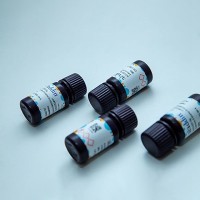The combination of capillary electrophoresis (CE) with mass spectrometry (MS) constitutes a powerful microanalytical system for the analysis of biological samples. The anionic and hydrophobic surface of the fused-silica capillary is, however, known to cause severe analyte–wall interactions in protein analysis. In order to control surface properties and eliminate protein adsorption, a capillary coating can be applied. A fast and simple strategy is to coat the anionic capillary with a cationic polymer via multisite electrostatic interaction. This generates a stable deactivation layer, without the need for addition of coating agent to the background electrolyte solution.
This chapter reviews the present knowledge of capillary coatings and especially cationic polymers in CE-MS, and describes the synthesis of a cationic polymer, PolyE-323, for deactivation of fused-silica capillaries. The capillary coating procedure is a simple three-step rinsing protocol comprising deprotonation of surface silanol groups using a base, adsorption of polymer, and a final rinse to remove excess polymer not adsorbed to the surface. As a result of the simplicity of the coating procedure, highly reproducible coatings can be prepared with little or no expert skills. Some practical aspects on using cationic-coated capillaries in CE-MS protein analysis are also discussed.






